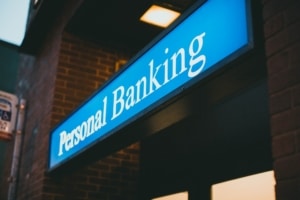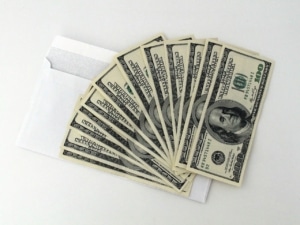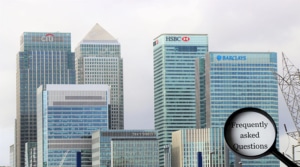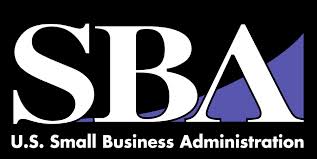What is an SBA Preferred Lender?
 While we’ve talked about some basics the SBA considers when looking at your application, it’s important to know that not all SBA lenders are created equal, and that your choice of an SBA Preferred Lender Provider (PLP) can get you to a decision 3-6 weeks faster than a standard SBA lender. So, what does it take to become a PLP?
While we’ve talked about some basics the SBA considers when looking at your application, it’s important to know that not all SBA lenders are created equal, and that your choice of an SBA Preferred Lender Provider (PLP) can get you to a decision 3-6 weeks faster than a standard SBA lender. So, what does it take to become a PLP?
Do the Work
Lenders can’t get a PLP certification just by asking for it. SBA is going to want to see a track record. Proof that lenders have the ability to:
- Process, close, service, and liquidate loans
- Develop and analyze complete loan packages
- Demonstrate knowledge of SBA policies and procedures
Additionally, they have to process a certain loan volume and to have done so with a satisfactory performance history.
Once there is an established track record of successfully processing and servicing SBA-guaranteed loans, there’s a good shot at becoming a PLP.
Nomination
A potential PLP can be nominated by an SBA field office or can ask that field office to be nominated. The lender then goes through an application process and if they are approved, they receive PLP designation for a maximum of two years.
During that two-year period, the SBA will audit loans, policies, and procedures as part of a possible recertification.
A lender can be recertified for the maximum two-year term, for a lesser period, or not at all. While this may seem like a burden on the lender, it also ensures that the SBA is working off the most current information, especially considering the special privileges PLPs receive.
PLP Advantage
Apart from having more loan options and configurations to offer clients, a PLP also has the authority to underwrite their own loans and make a final credit decision. That is what drives the time discrepancy between a PLP and a standard lender, who has to send in a completed package to the SBA and wait on an answer, which can vary significantly depending on the time of the year and market conditions.
In exchange, the PLP agrees, in the case of a default, to liquidate all business assets before asking the SBA to honor its guarantee, often 75% of the originated loan value. This is something the SBA would ask to be done anyway, so this once again underlines the speed component of a PLP relationship: a focus on wrapping up a failed loan with the same efficiency as approving a new one.
Not Just a Label
We’ve dealt with thousands of loans over the years across countless lenders and we don’t only work with PLPs. But we do tend to always have good experiences with PLPs. This is because the PLP label isn’t what made them great lenders. Great lenders have characteristics like:
- Fantastic communication
- Constant professionalism
- Speed in dealing with paperwork
- Empathy in dealing with challenging situations
Those traits are what led to them becoming PLPs, hence when they got their designation, we often already had a great relationship with them. We don’t only work with PLPs, but we definitely prefer them (and have names to share should you need them!).
Can’t get enough SBA knowledge? Check out this recent podcast with guest Jason Moxness that deals with myths about SBA lending. Or you can always give us a call.

 Many who were holding SBA loans in 2020 saw their interest and principal payments automatically made for six months due to provisions made in the CARES Act. Some new funding has been released for a second version of this program in 2021. But changes have been made by the SBA in February, so we wanted to ensure our readers got the most current and accurate information.
Many who were holding SBA loans in 2020 saw their interest and principal payments automatically made for six months due to provisions made in the CARES Act. Some new funding has been released for a second version of this program in 2021. But changes have been made by the SBA in February, so we wanted to ensure our readers got the most current and accurate information. One of the final acts of the outgoing administration in Washington was the signing of a bill that had $284B allocated for a second round of the
One of the final acts of the outgoing administration in Washington was the signing of a bill that had $284B allocated for a second round of the  A lot has happened since we first wrote about the
A lot has happened since we first wrote about the  We are still watching deals happen during this unique year in our history. What we’ve begun to notice more and more is that banks are asking more questions. With an overall feeling of caution in the air, an industry already known for its caution in “normal” times has become even more cautious.
We are still watching deals happen during this unique year in our history. What we’ve begun to notice more and more is that banks are asking more questions. With an overall feeling of caution in the air, an industry already known for its caution in “normal” times has become even more cautious.  A Shared Goal
A Shared Goal The majority of acquisitions require some level of bank debt to facilitate the transaction and to greatly enhance returns for the buyer. In most cases, buyers want to use as much bank money as possible and utilize their own personal funds for working capital and for family needs.
The majority of acquisitions require some level of bank debt to facilitate the transaction and to greatly enhance returns for the buyer. In most cases, buyers want to use as much bank money as possible and utilize their own personal funds for working capital and for family needs.